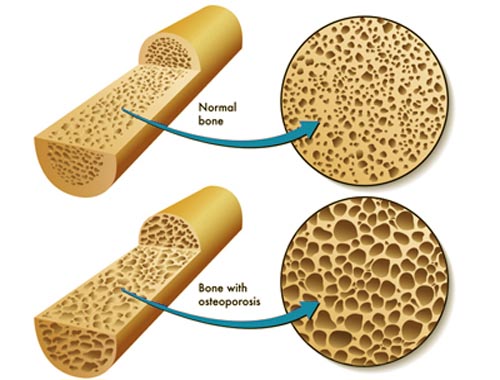Osteoporosis
Osteoporosis causes bones to become weak and brittle. So brittle that a fall or even mild stresses like bending over or coughing can cause a fracture. Osteoporosis-related fractures most commonly occur in the hip, wrist or spine. Bone is living tissue, which is constantly being absorbed and replaced. Osteoporosis occurs when the creation of new bone doesn't keep up with the removal of old bone. Osteoporosis affects men and women of all races. But white and Asian women, especially those who are past menopause, are at highest risk. Medications, dietary supplements and weight-bearing exercise can help strengthen your bones. Diagnosis based on history of prior fragility fracture or low bone-mass density, which is defined as a T-score <-2.5. Screening is based on individual risk factors, including female gender, maternal history of fragility fracture-osteoporosis, older age, low body mass index (<20-25 kg-m^2), body weight <58 kg, weight loss of >10% of body weight, androgen deprivation treatment (in males), aromatase inhibitor treatment (in females), steroid use, tobacco use, and kidney stone disease. Fall prevention is first-line therapy. Bisphosphonates are first-line pharmacologic therapy for postmenopausal women and men. In postmenopausal women, estrogen is considered only for those at high risk for whom nonestrogen medications are inappropriate.
